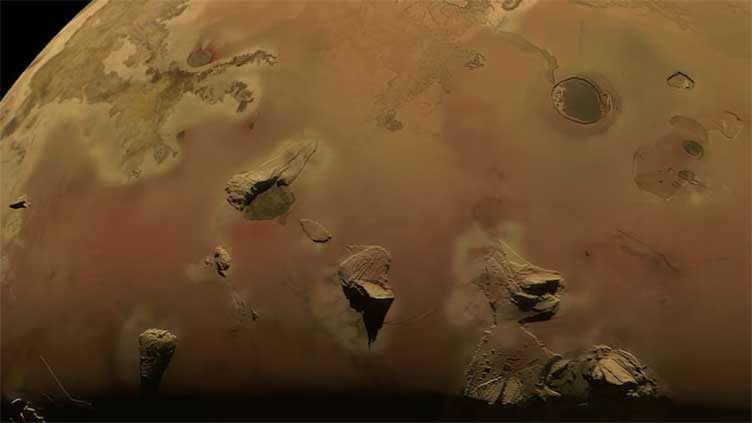Io, most volcanic place in solar system, looks haunting in closest ever pictures

Technology
The latest snapshots reveal a tumultuous landscape dominated by volcanic features
(Web Desk) - The latest snapshots reveal a tumultuous landscape dominated by volcanic features, including lava lakes and massive plumes of gas and molten rock.
Nasa's Juno spacecraft has captured the most detailed images yet of Io, Jupiter's innermost Galilean moon and the most volcanically active place in our solar system.
The latest snapshots reveal a tumultuous landscape dominated by volcanic features, including lava lakes and massive plumes of gas and molten rock.
The close-up photo showcases Io's vibrant surface, riddled with volcanic craters and bathed in the glow of flowing magma.
One of the most striking features is a colossal plume visible on the left side of the moon, just below the terminator — the line dividing day from night.
This plume, rising nearly 200 miles above Io's surface, reveals the moon's intense geologic activity.
Io's ceaseless volcanic eruptions are driven by the powerful gravitational forces exerted by Jupiter, coupled with the dynamic interactions with its neighbouring moons.
The immense tidal forces generated by Jupiter's gravity cause Io to flex and heat up internally, leading to its surface being perpetually resurfaced by volcanic activity.
Unlike its sister Galilean moons, which harbor icy crusts and subsurface oceans, Io's hostile environment is characterised by scorching lakes of molten silicate lava.
The absence of water on Io sets it apart from many other moons in the solar system, but the presence of sulphur and other volcanic materials gives it a distinctive, colourful appearance.
The latest images from Juno provide an unprecedented view of this alien landscape, allowing scientists to further study and understand the complex processes shaping Io.
Juno's mission, which has been ongoing since its arrival at Jupiter in 2016, continues to yield invaluable data about the gas giant and its moons.



